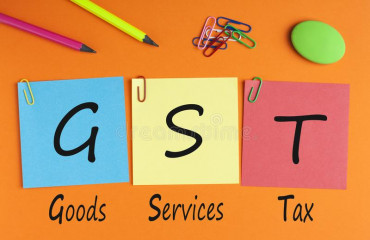
New Delhi: Central and state governments collected ₹1.72 trillion in Goods and Services Tax (GST) in October, a 13% increase from a year earlier, marking the second-highest monthly haul since the new tax regime debuted in 2017.
New Delhi: Central and state governments collected ₹1.72 trillion in Goods and Services Tax (GST) in October, a 13% increase from a year earlier, marking the second-highest monthly haul since the new tax regime debuted in 2017.
Overall, GST receipts so far this year are in line with the 10.5% nominal GDP growth rate projected by the finance ministry and reflect the trends in tax administration efficiency as well as consumption. The average gross monthly GST collection in FY24 is ₹1.66 trillion, up 11% from FY23.
"A mid-year collection of such an increased number is definitely worth a cheer, and the ongoing festivities-driven consumption could help this continue," said Abhishek Jain, indirect tax head and partner, KPMG, indicating a rising trend in consumption during the festive season, which is expected to drive up tax revenues. He added that the significantly increased collection could be linked to the settlement of disputes for FY17-18, as the normal period of limitation was ending on 30 September.
After settling taxes on inter-state sales, the central government received ₹72,934 crore in October, while states received ₹74,785 crore, the finance ministry said. Proceeds from the GST cess levied on items such as high-end automobiles stood at a robust ₹12,456 crore during the month.
Experts said the growth in GST collection has been aided to a considerable degree by improved administrative efficiency and a structural shift—micro enterprises taking GST registration that broadens the tax base and increases the formalization of the economy.
"The second-highest collection ever is a testament to the rapid growth of the Indian economy. The vibrancy of the domestic economy has been a key facilitator to the increasing tax collections. The widening of the tax net and detection of tax evasion/short payment through data analytics and comparative tools have contributed to the high collections in October 2023. With the festival season around the corner, GST collections are likely to remain robust," said Saloni Roy, partner at Deloitte India.
Indirect tax revenues between April and August have shown a relatively lower growth of 7.8%, while most of the pick-up has happened in direct taxes, with a cumulated growth of 26.6% during the period. "With such buoyant tax revenues, the government has been able to maintain its momentum of frontloading capital expenditure, which showed a cumulated growth of 48.1% during April-August FY24 without much increase in fiscal deficit," D.K. Srivastava, chief policy adviser, EY India, said in a note on the economy on Wednesday.
He added that by August, the cumulative fiscal deficit of the government amounted to only 36% of the annual budgeted target. In the first half of FY24, gross GST collections stood at ₹9.92 trillion, showing a growth of 11.1% over the corresponding period of FY23.
High-frequency indicators for August and September showed a strong growth momentum, Srivastava said, pointing to the growth in power consumption remaining elevated at 10.1% in September after a 15-month high of 17.4% in August. Gross bank credit showed a strong growth of 14.9% in August, improving from 14.7% in July. IIP growth accelerated to a 14-month high level of 10.3% in August, he added.
Vivek Jalan, partner at Tax Connect Advisory, a multi-disciplinary tax consultant, said that the cumulative growth of GST revenue for the period April-October 2023 vis-a-vis the same period last year is 11% against the budgeted 12% growth of central and state goods and services tax along with compensation cess revenue. "Important to note that even a 1% deficit in GST revenue from the budget can have a 0.03% or so impact on the fiscal deficit target for FY24," he said.
